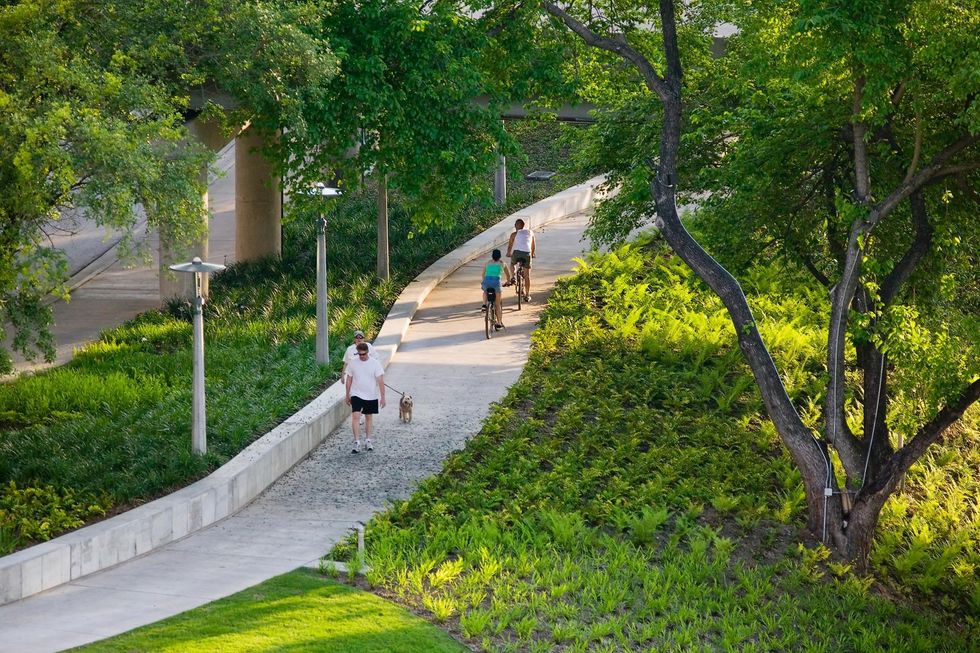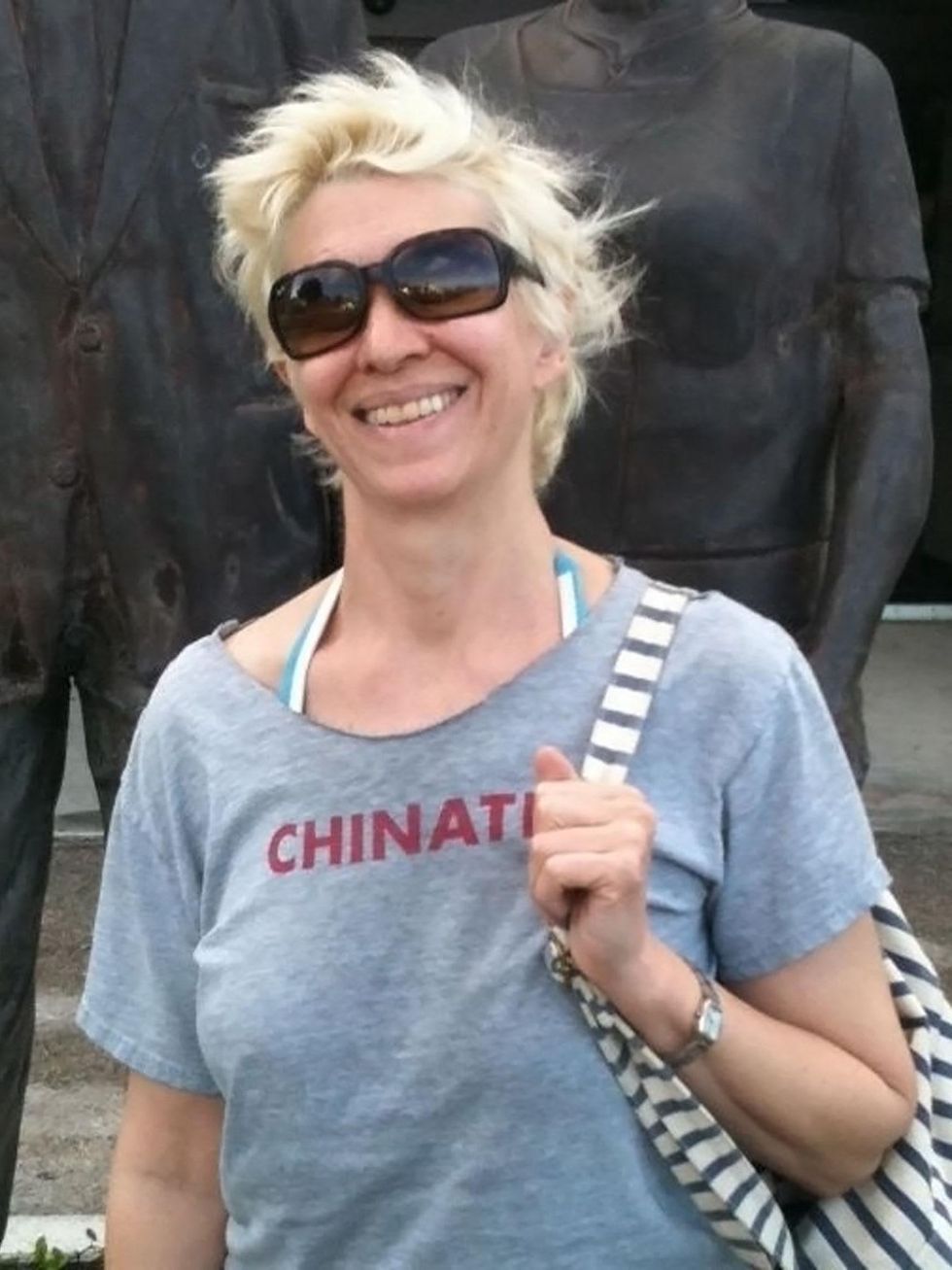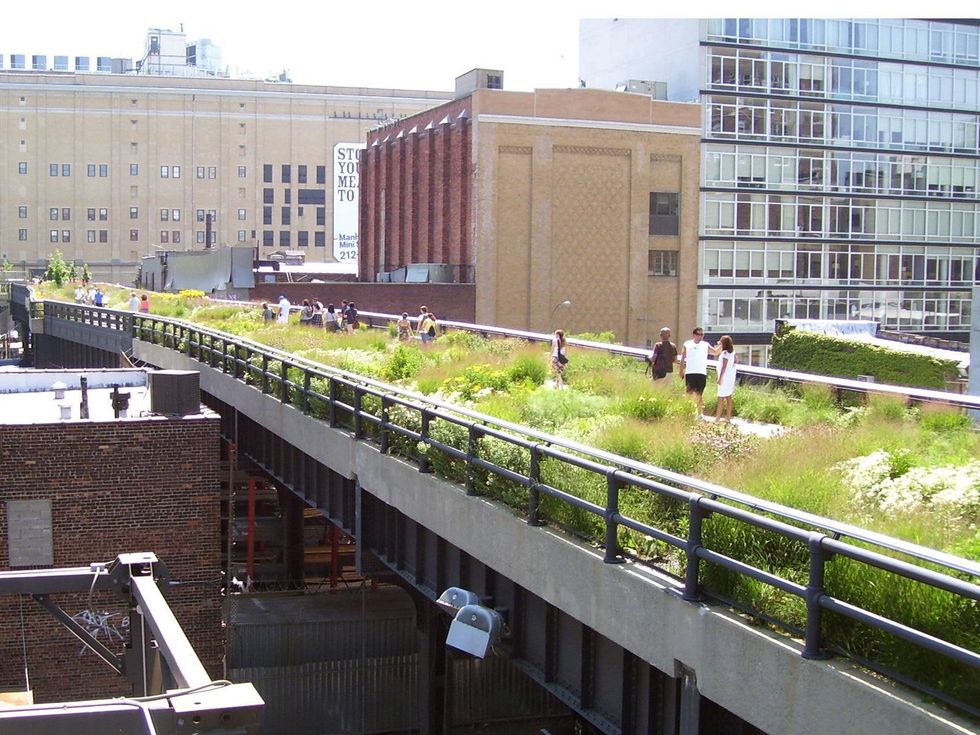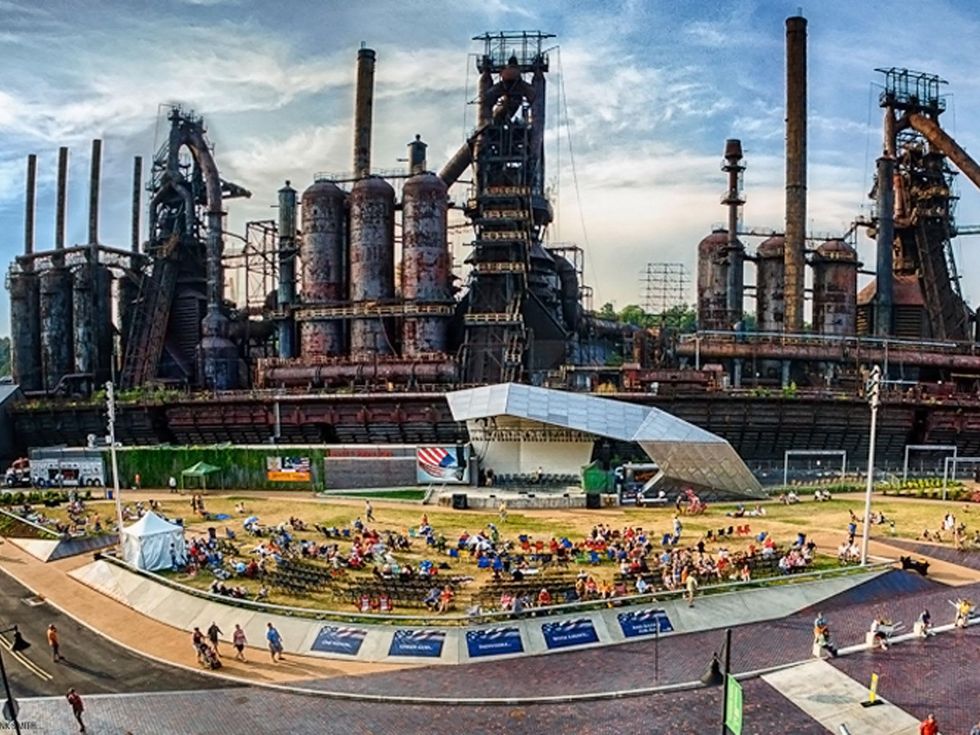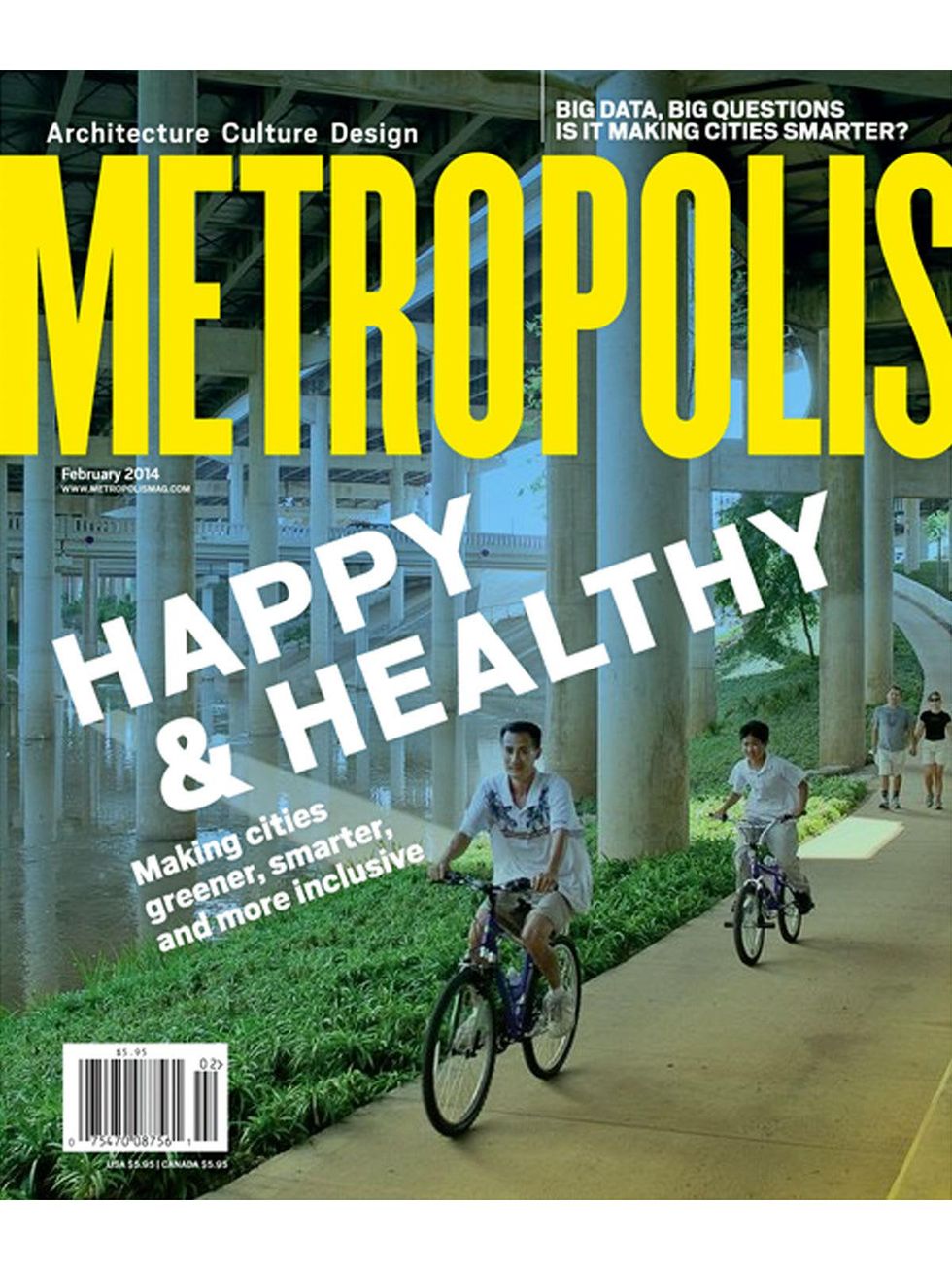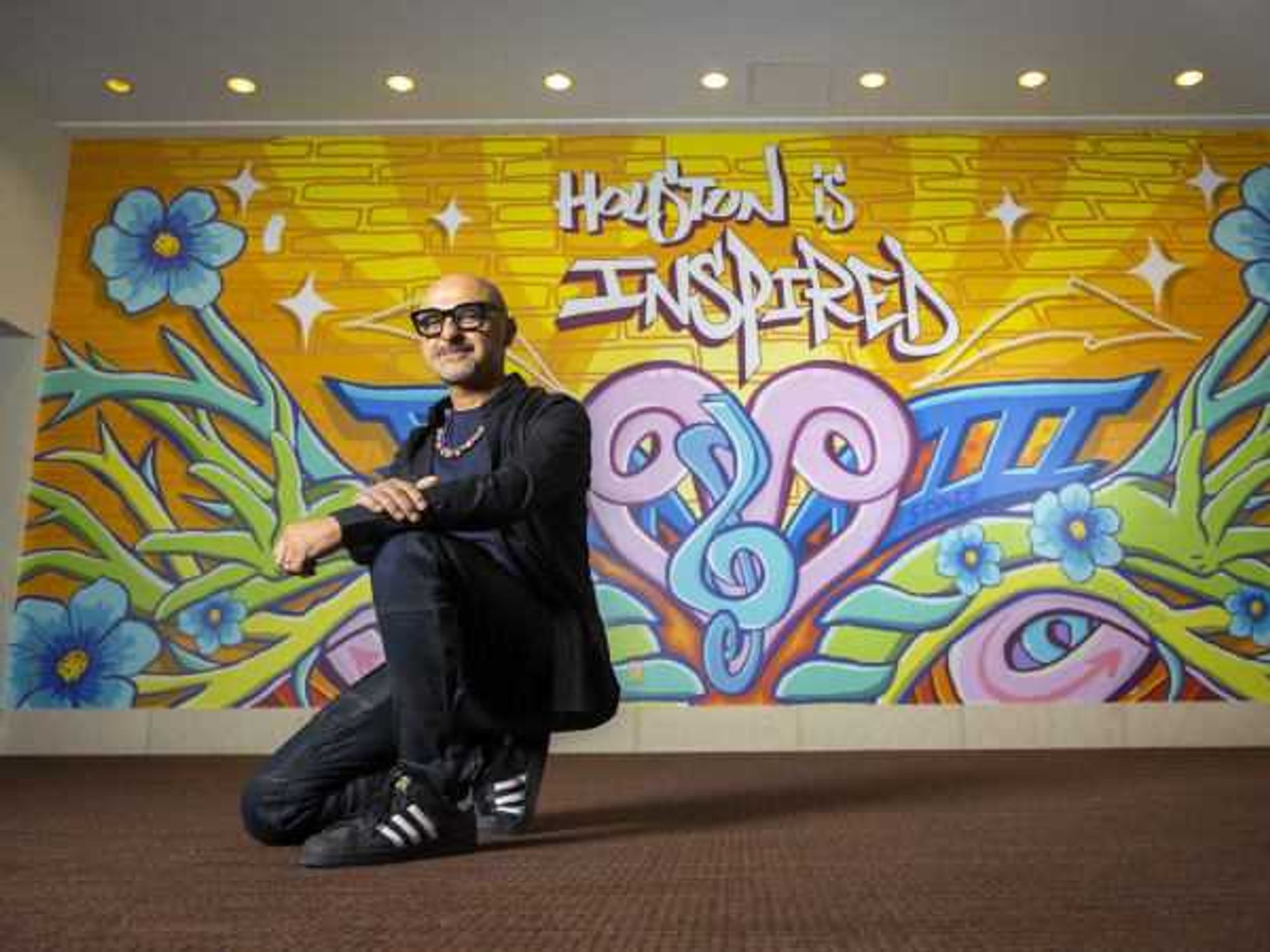Five Questions
Design expert zeroes in on transforming blighted urban areas into liveable, lovely spaces
New York-based urban planning critic Karrie Jacobs was so inspired by photographs of Buffalo Bayou improvements, she included a mention of the ongoing concrete-to-green transformation in a February article in the international Metropolis Magazine — without even a recent visit to Houston.
Editors at the magazine liked the photo she submitted of the Sabine Promenade, with its bicycle and jogging trails winding quietly underneath bridges and highways, so much so that they chose it for the cover.
Jacobs, founding editor-in-chef of Dwell magazine and author of The Perfect $100,000 House: A Trip Across America and Back in Pursuit of a Place to Call Home, will be in Houston to kick off the Lawndale Art Center's annual Design Fair this week. She will also showcase her urban trends expertise during a free lecture titled "In Praise of Man-Made Nature," on April 23 at 6:30 p.m. at the Museum of Fine Arts, Houston.
Jacobs recently talked by phone about her Houston visit, interesting man-made natural projects and other design enterprises that are changing the way we live.
CultureMap: What motivated you to come to Houston, in addition to speak at Lawndale?
Karrie Jacobs: It was a confluence of things. Before the invitation came to speak at Lawndale, I was writing about urban trends, turning urban waste and abused space into assets. I came upon the photos of the Sabine Promenade (one of many projects supported by the nonprofit Buffalo Bayou Partnership) and reached out to the principal architects at SWA. They have encapsulated exactly what I have been talking about for years.
Highways take of up thousands of acres. Here, the photos showed people walking, jogging and riding bikes, all the while being underneath these giant columns supporting major thoroughfares. They transformed this blighted urban area into a lovely space.
CM: What other projects in Houston have inspired you?
KJ: When I was at Dwell, we were working on the 2001 issue about the home of the future. I thought small houses were the answer. I met with architect Brett Zamore, who was working on a shotgun house in one of the wards. We featured it, alongside as a comparison with a small, high-tech contemporary house, in the issue. I believe artist Bert Long Jr. set up his studio at that same shotgun house before his death.
CM: What are the top man-made natural projects across the country?
KJ: Of course, it's an old idea, really, starting with Central Park. The role then of a park was to hide from the city, not see the city. High Line (in New York City) is what the talk of urban parks is all about these days. Now, people go there to experience urban design.
I really like that the L.A. River is being remade into a river again, with people kayaking and enjoying the waterway. La Dallman's Urban Plaza in Milwaukee is a bridge with the space underneath turned into a place for performances, with nice seating, lighting and electricity to actually hold a high-tech event. People like to go there for film festivals, too.
Bethlehem, Pa., was originally a steel mill town, with the factories now mostly abandoned. They created Bethlehem SteelStacks, an outdoor pavilion with the steel mill and blast furnaces in the background. The mill and stacks are part of the ambiance of the amphitheater.
CM: What ongoing urban design projects have you excited?
KJ: You'll see many design projects proposed to make the Northeast more resistant against hurricanes. People are talking about turning wasted space to absorb surges. And in New Jersey, there's the New Meadowlands, an effort to more efficiently use what is really an industrialized slum.
CM: Do you have any plans when you come to Houston, other than attend the design fair?
KJ: One of the first things I'm going to do it to take a bike tour of the bayou. I usually don't write about places that I haven't visited, and it's been a while since I've been in Houston. I'm just really looking forward to it.
